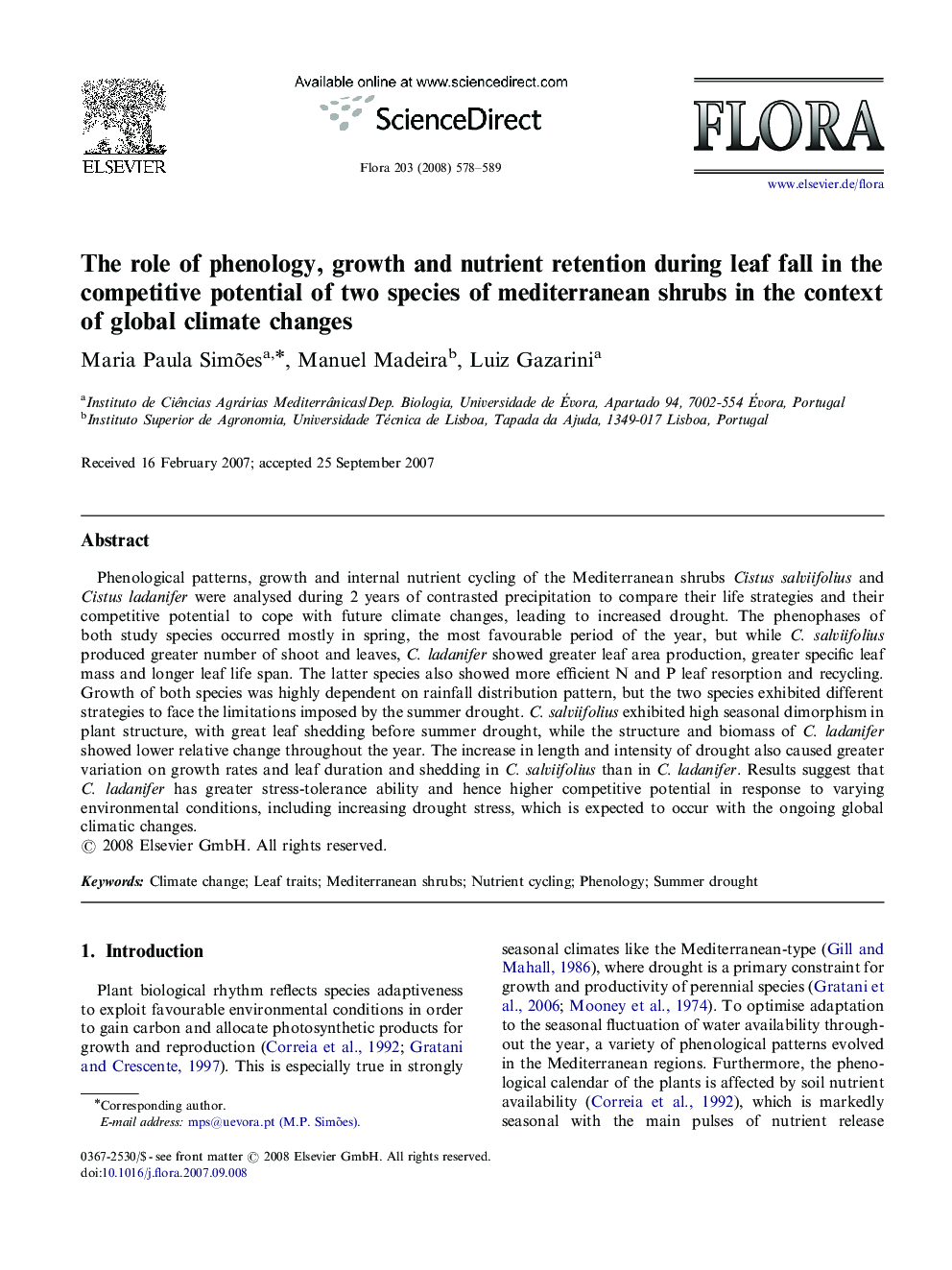| Article ID | Journal | Published Year | Pages | File Type |
|---|---|---|---|---|
| 2180198 | Flora - Morphology, Distribution, Functional Ecology of Plants | 2008 | 12 Pages |
Phenological patterns, growth and internal nutrient cycling of the Mediterranean shrubs Cistus salviifolius and Cistus ladanifer were analysed during 2 years of contrasted precipitation to compare their life strategies and their competitive potential to cope with future climate changes, leading to increased drought. The phenophases of both study species occurred mostly in spring, the most favourable period of the year, but while C. salviifolius produced greater number of shoot and leaves, C. ladanifer showed greater leaf area production, greater specific leaf mass and longer leaf life span. The latter species also showed more efficient N and P leaf resorption and recycling. Growth of both species was highly dependent on rainfall distribution pattern, but the two species exhibited different strategies to face the limitations imposed by the summer drought. C. salviifolius exhibited high seasonal dimorphism in plant structure, with great leaf shedding before summer drought, while the structure and biomass of C. ladanifer showed lower relative change throughout the year. The increase in length and intensity of drought also caused greater variation on growth rates and leaf duration and shedding in C. salviifolius than in C. ladanifer. Results suggest that C. ladanifer has greater stress-tolerance ability and hence higher competitive potential in response to varying environmental conditions, including increasing drought stress, which is expected to occur with the ongoing global climatic changes.
